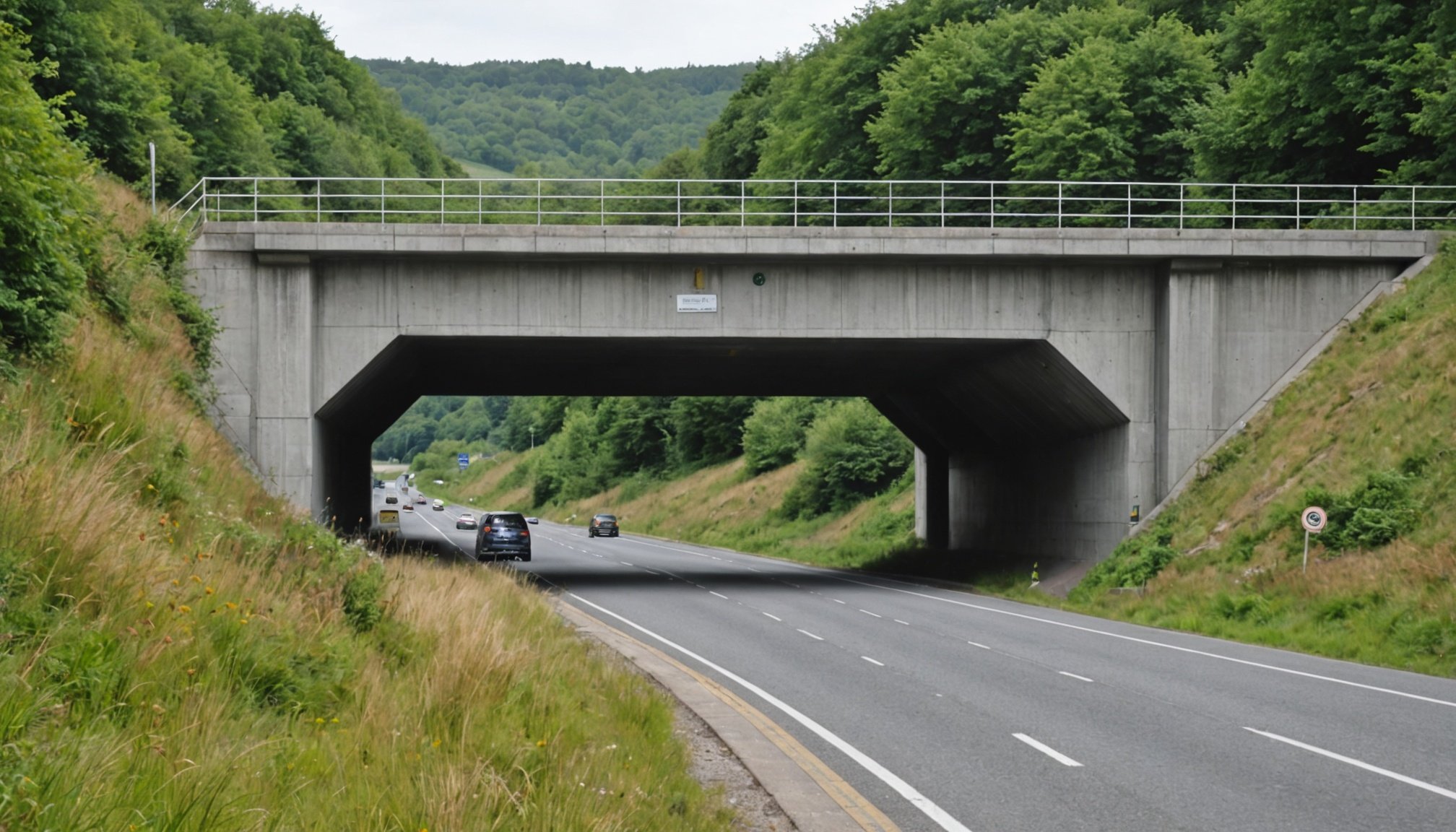Importance of Wildlife Corridors
Wildlife corridors play a crucial role in preserving biodiversity by maintaining ecological connectivity. Think of these corridors as nature’s highways, allowing animals to move safely between habitats, which is essential for survival and genetic health. Without these corridors, animals face fragmented habitats, leading to isolated populations that are more vulnerable to extinction.
One of the remarkable aspects of wildlife corridors is their function as migratory pathways. Many species migrate seasonally, and corridors help them navigate human-made obstacles like roads and urban areas. This connectivity ensures animals can access resources such as food and breeding sites.
Also read : Revolutionary techniques by uk researchers for reviving marine wildlife impacted by oil spills
A significant benefit of ecological connectivity is the enhancement of ecosystem resilience. By facilitating movement and interaction among species, wildlife corridors contribute to the overall health of ecosystems. This interconnectedness supports diverse species populations, enabling them to adapt to environmental changes more effectively.
Wildlife corridors also help reduce human-animal conflicts by providing safe passages, decreasing the likelihood of animals venturing into human-populated areas. This underscores the dual benefits of ecological connectivity—it is a win-win for both wildlife and humans.
Also to see : Must-have plants for uk gardens: key species to support native butterfly habitats
Role of Legislation and Local Initiatives
In the UK, wildlife conservation laws are instrumental in supporting the development of wildlife crossings. These laws ensure that infrastructure projects consider ecological impacts, promoting designs that are beneficial for both humans and flora and fauna. The Wildlife and Countryside Act 1981 is a pivotal regulation, protecting habitats and species, thus fostering the implementation of overpasses and underpasses.
Local projects and community involvement play a critical role in the success of these crossings. Through dedicated local initiatives, communities have demonstrated commitment to preserving biodiversity. For instance, collaborative projects have led to the successful establishment of wildlife corridors in regions like Scotland. Such initiatives exemplify how grassroots involvement can spark impactful changes, encouraging ecological connectivity and the protection of migratory pathways.
Public awareness is crucial for advancing these efforts. Engaging the public not only raises awareness of biodiversity issues but also boosts support for conservation measures. Educational campaigns can substantially increase understanding and appreciation of wildlife corridors, urging communities to advocate for further legislative backing and resources. As legislation and community initiatives converge, they pave the way for effective solutions to ecological challenges.
Case Studies of Successful Wildlife Crossings
Exploring wildlife crossing success stories provides invaluable insights into effective conservation practices. In the UK, notable projects demonstrate innovative approaches to ensuring safe animal passage.
The M25 J11 Overpass
The M25 J11 Overpass highlights a successful integration of environmental planning and structural design. Since its construction, species utilization has surged, with a marked decrease in road mortality rates. Wildlife, from small mammals to larger species, now traverses smoothly, bringing ecological benefits to the region.
The Fallowfield Loop in Manchester
In Manchester, the Fallowfield Loop serves as a model for urban wildlife corridors. This innovative pathway allows species to navigate dense urban spaces efficiently. Its success lies in community involvement and support, driving awareness and local engagement in biodiversity preservation.
The A14 Underpass Project
Similarly, the A14 Underpass Project showcases effective design principles that cater to diverse wildlife needs. Statistical data reveals enhanced species movement and connectivity. The project acts as a benchmark for future initiatives in habitat restoration and species preservation.
These case studies underscore the potential of thoughtfully designed wildlife crossings to not only support biodiversity but also foster ecological resilience.
Design and Implementation Challenges
Building effective wildlife crossings involves navigating numerous design challenges and construction issues. One primary obstacle is ensuring that the crossing design is adaptable to suit diverse wildlife needs, requiring an intricate understanding of local ecological connectivity. Engineering solutions play a crucial role in overcoming this barrier, employing innovative designs such as naturalistic landscaping to mimic surrounding habitats.
Site-specific factors can also pose significant hurdles during construction. These include terrain variability, climate conditions, and integration with existing infrastructure. To tackle these issues, employing advanced engineering techniques, such as modular construction and eco-friendly materials, can provide effective solutions, ensuring minimal disruption to the environment.
The importance of ongoing monitoring is paramount. Wildlife crossings require continual evaluation and adaptation. This process ensures they remain effective in their ecological goals, especially as landscapes and species populations evolve over time. Moreover, these structures must accommodate migratory pathways, shifting with changing wildlife patterns.
Addressing these challenges requires collaboration among engineers, ecologists, and policymakers. By leveraging diverse expertise, it becomes possible to craft crossings that not only serve as migratory bridges but also enhance overall biodiversity preservation. This cooperation epitomizes a proactive approach, where engineering prowess and ecological insights coexist.
Future Directions for Wildlife Crossings in the UK
In the UK, the future of wildlife crossings is being shaped by emerging trends in design and technology. These advancements focus on enhancing ecological connectivity and ensuring that conservation strategies are more effective. For instance, integrating digital monitoring systems in wildlife crossings could provide real-time data on species movement, helping to adapt designs to the needs of migratory species.
Public policy plays a crucial role in the advancement of wildlife corridors. Increased funding and strategic planning are necessary to promote new projects. Future projects may involve innovative structures like vegetated overpasses and multi-species underpasses. Such designs could accommodate various species, reducing road mortality and promoting species preservation.
Moreover, conservation strategies must be adaptable, taking into consideration climate change and its impact on animal habitats. The planning process would benefit from involving ecologists, engineers, and policymakers collaboratively to anticipate and address these challenges effectively.
Public engagement can further support these initiatives, raising awareness and bolstering community involvement in conservation efforts. As interest grows, it’s anticipated that more resources will be devoted to these critical ecological projects, solidifying the UK’s commitment to preserving biodiversity.
Overview of UK Overpasses and Underpasses
UK wildlife crossings, such as overpasses and underpasses, play a critical role in re-establishing ecological connectivity. These structures serve as dedicated passageways for wildlife, enabling animals to cross human-created barriers safely. Overpasses are typically designed as bridges with vegetation to mimic natural habitats, while underpasses are tunnels that often include wildlife-friendly features. Both designs aim to mitigate the impact of roads and urban infrastructure on animal populations.
The benefits of these crossings are multifaceted. By providing safe travel routes, overpasses and underpasses help reduce road mortality, promoting species preservation. They also facilitate genetic exchange, enhancing biodiversity resilience across fragmented habitats.
Effective overpass design should incorporate gentle slopes and native plantings to encourage animal usage. Similarly, underpass benefits are maximized by ensuring adequate lighting and drainage to maintain a natural environment.
Regulatory frameworks, including the Wildlife and Countryside Act 1981, emphasise the importance of integrating ecological considerations into infrastructure projects. Such legislation ensures that conservation efforts are prioritized in planning, paving the way for more effective wildlife crossings. This creates a harmonious balance between developmental needs and ecological preservation in the UK.
Ecological Impacts of Overpasses and Underpasses
The ecological benefits of overpasses and underpasses are substantial in promoting species preservation. These crossings significantly mitigate road mortality, allowing animals to move safely across barriers like highways. For instance, post-construction studies show improved species survival rates, highlighting the success of these structures in enhancing ecological connectivity.
Adjacent habitat restoration is a crucial element, ensuring that wildlife crossings are not isolated solutions but integrated into existing ecosystems. Improving vegetation and landscape around crossings increases their effectiveness, offering animals the resources they need in close proximity.
Overpasses are often designed with environmental impact in mind, featuring native plantings that blend into surrounding landscapes. This encourages animal use and benefits local ecosystems. Underpasses provide similar benefits by maintaining a natural environment, avoiding disruptions from human infrastructure.
These crossings exemplify the harmonious balance between development and conservation. By reducing road mortality and restoring habitats, they play a vital role in preserving biodiversity. They not only ensure the safe passage of animals but also support genetic diversity by connecting fragmented habitats, fostering resilience against ecological threats.






